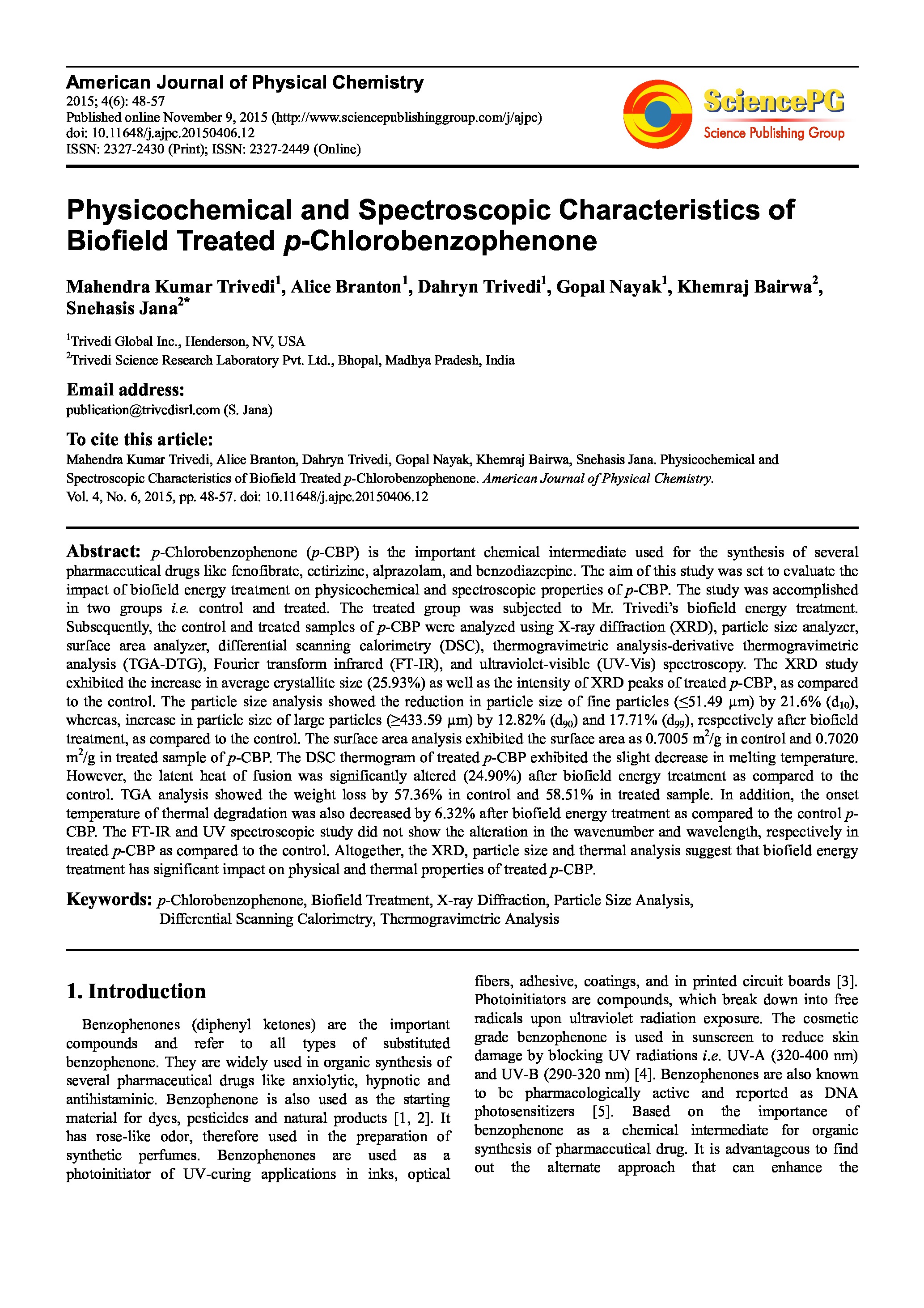Physicochemical and Spectroscopic Characteristics of Biofield Treated p-Chlorobenzophenone
Affiliation
Trivedi Global Inc.; Trivedi Science Research Laboratory Pvt. Ltd.
Main category
Natural Sciences (Analytical Chemistry, Method Development (Chemistr)
Abstract
p-Chlorobenzophenone (p-CBP) is the important chemical intermediate used for the synthesis of several pharmaceutical drugs like fenofibrate, cetirizine, alprazolam, and benzodiazepine. The aim of this study was set to evaluate the impact of biofield energy treatment on physicochemical and spectroscopic properties of p-CBP. The study was accomplished in two groups i.e. control and treated. The treated group was subjected to Mr. Trivedi’s biofield energy treatment. Subsequently, the control and treated samples of p-CBP were analyzed using X-ray diffraction (XRD), particle size analyzer, surface area analyzer, differential scanning calorimetry (DSC), thermogravimetric analysis-derivative thermogravimetric analysis (TGA-DTG), Fourier transform infrared (FT-IR), and ultraviolet-visible (UV-Vis) spectroscopy. The XRD study exhibited the increase in average crystallite size (25.93%) as well as the intensity of XRD peaks of treated p-CBP, as compared to the control. The particle size analysis showed the reduction in particle size of fine particles (≤51.49 µm) by 21.6% (d10), whereas, increase in particle size of large particles (≥433.59 µm) by 12.82% (d90) and 17.71% (d99), respectively after biofield treatment, as compared to the control. The surface area analysis exhibited the surface area as 0.7005 m2/g in control and 0.7020 m2/g in treated sample of p-CBP. The DSC thermogram of treated p-CBP exhibited the slight decrease in melting temperature. However, the latent heat of fusion was significantly altered (24.90%) after biofield energy treatment as compared to the control. TGA analysis showed the weight loss by 57.36% in control and 58.51% in treated sample. In addition, the onset temperature of thermal degradation was also decreased by 6.32% after biofield energy treatment as compared to the control p-CBP. The FT-IR and UV spectroscopic study did not show the alteration in the wavenumber and wavelength, respectively in treated p-CBP as compared to the control. Altogether, the XRD, particle size and thermal analysis suggest that biofield energy treatment has significant impact on physical and thermal properties of treated p-CBP.
DOI
10.18147/smn.2016/paper:469
Do you have problems viewing the pdf-file? Download paper
here
If the paper contains inappropriate content, please
report the paper. You will be redirected to the landing page.
